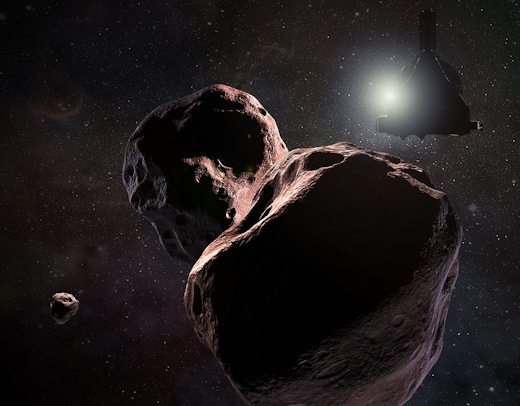Dec. 27, 2018: The habits of a weatherman are hard to break–even on holiday. So it was that Dutch meteorologist Jacob Kuiper found himself outside on Christmas morning, looking up. What he saw amazed him. “The sky was filling with strange clouds,” says Kuiper. “At first I thought they were some form of cirrus, but these clouds were uncommonly wavy with unusual curls. When I saw the telltale flashes of color, I realized they must be polar stratospheric clouds (PSCs).”
Kuiper made a time-lapse video of the display. Note the hypnotic waves and how, at the 25 second mark, ordinary clouds may be seen scudding far below them:
https://player.vimeo.com/video/308454218
Polar stratospheric clouds are not your ordinary Christmas clouds. Indeed, they have little to do with regular weather, floating so high above Earth that even airplanes cannot reach them.
Normally, the stratosphere is free of clouds–completely transparent. It’s very dry up there with a wide separation between molecules of water. When the temperature drops to around -85ºC, however, those sparse molecules begin to reluctantly gather, forming crystals of ice that become PSCs.
“I have been working in the National Meteorological Office in the central part of The Netherlands (KNMI) for 40 years,” says Kuiper. “Only twice have I seen a display of stratospheric clouds this widespread. It was thrilling. I didn’t expect the stratosphere over our country to be cold enough, but one of the stratosphere scientists in our Met. Office confirmed my idea. He also was quite surprised.”

Above: PSCs inside the Arctic Circle in 2017. Photo credit: Mia Stålnacke of Kiruna, Sweden
Tiny ice crystals in PSCs can produce episodes of iridescence so brilliant that they are sometimes mistaken for auroras. The display Kuiper recorded contained only a few brief flashes of those colors–just enough for an identification.
PSCs come in two varieties: Type I contains hydrated droplets of nitric acid and sulphuric acid. These are chemicals that can destroy ozone. Indeed, an ozone hole formed over the UK in Feb. 2016 following an outbreak of Type 1 PSCs. Type II PSCs are icy and colorful, and they do little damage to the ozone layer. The clouds Kuiper witnessed may be a mixture of both.
The display was so rare that researchers in the Met Office conducted an extra round of Christmas radio soundings to probe the stratosphere. They are still processing the data, so stay tuned!
Realtime Space Weather Photo Gallery
A GIFT FROM THE EDGE OF SPACE: The students of Earth to Sky Calculus are about to kick off a new year of cosmic ray balloon launches, continuing a 5-year campaign to monitor increasing levels of radiation in Earth’s atmosphere. You can help. Buy any gift item from the Earth to Sky Store and we’ll give you 10% off to celebrate the New Year.
All items in the Earth to Sky Store have flown to the edge of space onboard cosmic ray balloons. Each one comes with a greeting card showing the item in flight and telling the story of its journey. All sales support the Earth to Sky Calculus cosmic ray ballooning program and hands-on STEM research.
Far Out Gifts: Earth to Sky Store
All sales support hands-on STEM education

















